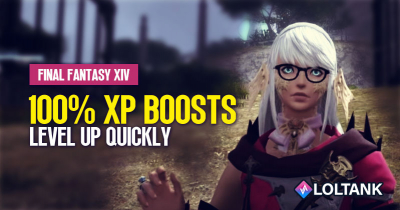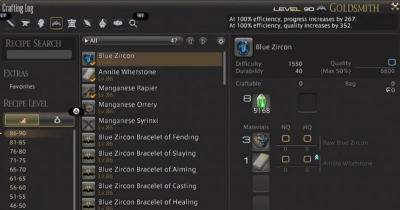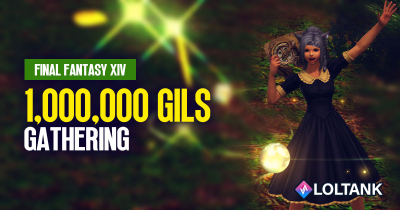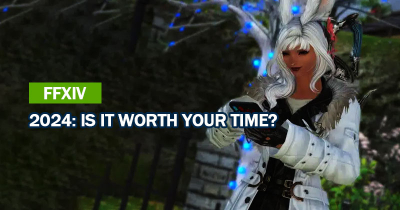FFXIV Hidden Mechanics: Top 10 Unexplained Gameplay Features
Final Fantasy 14 is a complex game with various mechanics that players need to understand to succeed. However, there are several mechanics that need to be explained or explained more in the game. In this guide, we will discuss 10 of these mechanics and provide a detailed explanation for each. If you have any additional tips or know about peculiar mechanics, feel free to share them in the comments section. Let's dive into the list!
- Top 1. DoT Snapshotting
- Top 2. How DoTs/HoTs Tick
- Top 3. Auto Attacks
- Top 4. Movement Actions and Telegraphs
- Top 5. Damage Buff Stacking Multiplicatively
- Top 6. Why We Don't Want to Stack Defensive Cooldowns?
- Tip 7. 0 Damage = 0 Side Effects!.. Sometimes
- Tip 8. Dying Through Invulnerabilities and More
- Top 9. Diminishing Returns on Debuffs
- Top 10. Positionals, Precisely!

↖ Top 1. DoT Snapshotting
DoT Snapshotting refers to the process where a Damage over Time (DoT) or Healing over Time (HoT) effect takes a snapshot of the giver and receiver's status at the moment of casting. This means that when you apply a DoT to an enemy, the game considers your damage buffs and debuffs, as well as the enemy's defensive buffs and debuffs, to calculate the damage per tick throughout the entire duration of the DoT. The same principle applies to certain heal-over-time effects. Understanding snapshotting can help you maximize your damage or healing output.
↖ Top 2. How DoTs/HoTs Tick
DoTs and HoTs tick every three seconds without any exceptions. Even if an ability suggests otherwise, all DoTs and HoTs adhere to this rule. Some abilities, like Machinist's Flamethrower or certain PvP actions, have different rules because they are channelled attacks. Understanding the three-second tick interval allows you to calculate the total damage or healing of a DoT or HoT effect by dividing the duration by three and multiplying it by the potency.
↖ Top 3. Auto Attacks
Auto attacks are regular attacks performed by your character without any player input. The damage of auto attacks scales with strength for most jobs, except for healers and mages, whose auto attacks scale with their respective attributes (e.g., dexterity). The damage of auto attacks is also influenced by the auto attack and delay properties found on your job's weapon. Faster weapons deal less damage per swing, while slower weapons deal more. Additionally, casting spells delays your auto attacks. Understanding these factors can help you optimize your damage output.
↖ Top 4. Movement Actions and Telegraphs
Movement actions can be misleading when it comes to avoiding telegraphed attacks. The game considers your character to have moved from the starting position to the final position of a movement action all at once when you visually reach the destination. This means that if you're mid-jump or in the middle of a movement action when a telegraphed attack resolves, you need to complete the movement action and return to the ground before the attack hits. Latency can affect this mechanic, but the general idea remains the same.
↖ Top 5. Damage Buff Stacking Multiplicatively
Damage buffs in Final Fantasy 14 stack multiplicatively, meaning they are multiplied together rather than added together. This allows for more significant damage increases when multiple buffs are active. For example, if you have two buffs that increase your damage by 10%, using them individually will increase your damage by 10% each. However, using them together will result in a greater damage increase since you multiply the damage by 110% and then by 110% again, resulting in a total damage increase of 21%. Understanding how damage buffs stack multiplicatively helps you optimize your damage output during battles.
↖ Top 6. Why We Don't Want to Stack Defensive Cooldowns?
When it comes to damage reduction, there are better options than stacking defensive cooldowns. The reason behind this is that increasing the value of something multiplicatively makes it exponentially bigger. However, decreasing the value of something multiplicatively, as in the case of damage reduction, is generally detrimental. Additive stacking is not used because it would allow you to decrease the value of attacks to a negative number, which doesn't make sense. Multiplicative stacking of buffs and debuffs makes the result more predictable. So, it's advisable to cycle through defensive cooldowns one at a time to maximize their value.
↖ Tip 7. 0 Damage = 0 Side Effects!.. Sometimes
Sometimes, zero damage equals zero side effects, but only sometimes. Certain abilities and boss mechanics in the game apply side effects only if they deal non-zero damage. For example, Scholar and Sage shields can prevent mechanics that would otherwise cause knockback. Understanding which mechanics are blocked by dealing zero damage and which aren't can be helpful for planning your actions and mitigating damage effectively.
↖ Tip 8. Dying Through Invulnerabilities and More
It's not uncommon to die even after using an invulnerability ability like Hallowed Ground or healing someone with a life-saving spell like Benediction. This happens due to server latency and spaghetti code. The game registers the killing blow before the invulnerability or healing takes effect, causing the seemingly contradictory outcome. However, it's generally consistent, so it's best to anticipate and use invulnerabilities ahead of time to avoid such situations. Keep in mind that some boss mechanics ignore invulnerabilities altogether, so be cautious.
↖ Top 9. Diminishing Returns on Debuffs
Diminishing returns come into play when you apply debuffs to enemies that impede their actions, such as stuns, slows, or sleeps. The first application of the debuff has its full duration, but subsequent applications within a short time have reduced durations. After the third application, any further debuff applications have no effect. Diminishing returns reset precisely one minute after the most recent successful application of the debuff. Knowing this mechanic can be particularly helpful when using crowd control abilities effectively.
↖ Top 10. Positionals, Precisely!
Positionals refer to actions in FFXIV that deal extra damage when performed from specific angles: the rear or the flank of an enemy. The rear refers to the entirety of the open backside of the enemy, while the two flanks are the 90-degree angles on either side. Most jobs have rear and flank targeting attacks, and it's crucial to position yourself correctly to maximize damage. For enemies with closed-back areas, there are no specific positional requirements. Keep in mind that bosses in certain content, like deep dungeons or larger arena-type bosses, may not allow access to their backside.
Conclusion:
Understanding these often unexplained mechanics in Final Fantasy 14 can greatly enhance your gameplay experience. Remember to optimize your use of defensive cooldowns, consider the relationship between damage and side effects, be aware of invulnerability limitations, manage debuff diminishing returns, and master positionals for maximum damage output. By familiarizing yourself with these mechanics, you'll become a more proficient adventurer in the world of FFXIV.
Most Popular Posts
- FFXIV Endwalker Patch 6.4 Tier List: Meta Placement & Job Rankings
- FFXIV Patch 6.4 Island Sanctuary Rank 16 Rewards: Glamour, Mounts, and New Buildings
- FFXIV Patch 6.4 Update: Level 90 Gear Progression Guide
- Top 10 Epic Samurai Weapons: How to obtain them in FFXIV?
- FFXIV Containment Bay Z1T9: Zurvan (Unreal) Fight Guide
- FFXIV Patch 6.51 New Exquisite Tomestone Weapons Guide
Popular Category Lists
- Path of Exile / (873)
- Diablo IV / (702)
- Runescape / (344)
- New World / (172)
- WoW Classic SoD / (171)
- Guild Wars 2 / (159)
- Elder Scrolls Online / (138)
- FFXIV / (135)
- World of Warcraft / (65)
- WOW Classic / (43)
- Elden Ring / (40)
- Throne and Liberty / (36)
- SWTOR / (35)
- Albion / (35)
- Last Epoch / (32)
- League of Legends / (30)
- Dark and Darker / (28)
- Fallout 76 / (27)
- WotLK Classic / (23)
- Genshin Impact / (22)





 0
0








